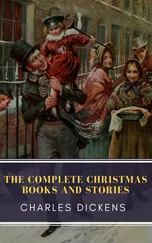Andrew Lang - Books and Bookmen
Здесь есть возможность читать онлайн «Andrew Lang - Books and Bookmen» — ознакомительный отрывок электронной книги совершенно бесплатно, а после прочтения отрывка купить полную версию. В некоторых случаях можно слушать аудио, скачать через торрент в формате fb2 и присутствует краткое содержание. Жанр: foreign_antique, foreign_prose, на английском языке. Описание произведения, (предисловие) а так же отзывы посетителей доступны на портале библиотеки ЛибКат.
- Название:Books and Bookmen
- Автор:
- Жанр:
- Год:неизвестен
- ISBN:нет данных
- Рейтинг книги:3 / 5. Голосов: 1
-
Избранное:Добавить в избранное
- Отзывы:
-
Ваша оценка:
- 60
- 1
- 2
- 3
- 4
- 5
Books and Bookmen: краткое содержание, описание и аннотация
Предлагаем к чтению аннотацию, описание, краткое содержание или предисловие (зависит от того, что написал сам автор книги «Books and Bookmen»). Если вы не нашли необходимую информацию о книге — напишите в комментариях, мы постараемся отыскать её.
Books and Bookmen — читать онлайн ознакомительный отрывок
Ниже представлен текст книги, разбитый по страницам. Система сохранения места последней прочитанной страницы, позволяет с удобством читать онлайн бесплатно книгу «Books and Bookmen», без необходимости каждый раз заново искать на чём Вы остановились. Поставьте закладку, и сможете в любой момент перейти на страницу, на которой закончили чтение.
Интервал:
Закладка:
“A drynkyng for the soul” of the dead, a τάφος or funeral feast, was as common in England before the Reformation as in ancient Greece. James Cooke, of Sporle, in Norfolk (1528), left six shillings and eightpence to pay for this “drynkyng for his soul;” and the funeral feast, which long survived in the distribution of wine, wafers, and rosemary, still endures as a slight collation of wine and cake in Scotland. What a funeral could be, as late as 1731, Mr. Chester Waters proves by the bill for the burial of Andrew Card, senior bencher of Gray’s Inn. The deceased was brave in a “superfine pinked shroud” (cheap at 1 l . 5 s . 6 d .), and there were eight large plate candle-sticks on stands round the daïs, and ninety-six buckram escutcheons. The pall-bearers wore Alamode hatbands covered with frizances, and so did the divines who were present at the melancholy but gorgeous function. A hundred men in mourning carried a hundred white wax branch lights, and the gloves of the porters in Gray’s Inn were ash-coloured with black points. Yet the wine cost no more than 1 l . 19 s . 6 d .; a “deal of sack,” by no means “intolerable.”
Leaving the funerals, we find that the parish register sometimes records ancient and obsolete modes of death. Thus, martyrs are scarce now, but the register of All Saints’, Derby, 1556, mentions “a poor blinde woman called Joan Waste, of this parish, a martyr, burned in Windmill pit.” She was condemned by Ralph Baynes, Bishop of Coventry and Lichfield. In 1558, at Richmond, in Yorkshire, we find “Richard Snell, b’rnt, bur. 9 Sept.” At Croydon, in 1585, Roger Shepherd probably never expected to be eaten by a lioness. Roger was not, like Wyllyam Barker, “a common drunkard and blasphemer,” and we cannot regard the Croydon lioness, like the Nemean lion, as a miraculous monster sent against the county of Surrey for the sins of the people. The lioness “was brought into the town to be seen of such as would give money to see her. He” (Roger) “was sore wounded in sundry places, and was buried the 26th Aug.”
In 1590, the register of St. Oswald’s, Durham, informs us that “Duke, Hyll, Hogge, and Holiday” were hanged and burned for “there horrible offences.” The arm of one of these horrible offenders was preserved at St. Omer as the relic of a martyr, “a most precious treasure,” in 1686. But no one knew whether the arm belonged originally to Holiday, Hyll, Duke, or Hogge. The coals, when these unfortunate men were burned, cost sixpence; the other items in the account of the abominable execution are, perhaps, too repulsive to be quoted.
According to some critics of the British government, we do not treat the Egyptians well. But our conduct towards the Fellahs has certainly improved since this entry was made in the register of St. Nicholas, Durham (1592, August 8th): ‘Simson, Arington, Featherston, Fenwick, and Lancaster, were hanged for being Egyptians .’ They were, in fact, gypsies, or had been consorting with gypsies, and they suffered under 5 Eliz. c. 20. In 1783 this statute was abolished, and was even considered “a law of excessive severity.” For even a hundred years ago “the puling cant of sickly humanitarianism” was making itself heard to the injury of our sturdy old English legislation. To be killed by a poet is now an unusual fate, but the St. Leonard’s, Shoreditch, register (1598) mentions how “Gabriel Spencer, being slayne, was buried.” Gabriel was “slayne” by Rare Ben Jonson, in Hoxton Fields.
The burning of witches is, naturally, not an uncommon item in parish registers, and is set forth in a bold, business-like manner. On August 21 (1650) fifteen women and one man were executed for the imaginary crime of witchcraft. “A grave, for a witch, sixpence,” is an item in the municipal accounts. And the grave was a cheap haven for the poor woman who had been committed to the tender mercies of a Scotch witch-trier. Cetewayo’s medicine-men, who “smelt out” witches, were only some two centuries in the rear of our civilisation. Three hundred years ago Bishop Jewell, preaching before Elizabeth, was quite of the mind of Cetewayo and Saul, as to the wickedness of suffering a witch to live. As late as 1691, the register of Holy Island, Northumberland, mentions “William Cleugh, bewitched to death,” and the superstition is almost as powerful as ever among the rural people. Between July 13 and July 24 (1699) the widow Comon, in Essex, was thrice swum for a witch. She was not drowned, but survived her immersion for only five months. A singular homicide is recorded at Newington Butts, 1689. “John Arris and Derwick Farlin in one grave, being both Dutch soldiers; one killed the other drinking brandy.” But who slew the slayer? The register is silent; but “often eating a shoulder of mutton or a peck of hasty pudding at a time caused the death of James Parsons,” at Teddington, in Middlesex, 1743. Parsons had resisted the effects of shoulders of mutton and hasty pudding till the age of thirty-six.
And so the registers run on. Sometimes they tell of the death of a glutton, sometimes of a Grace wyfe (grosse femme). Now the bell tolls for the decease of a duke, now of a “dog-whipper.” “Lutenists” and “Saltpetremen” – the skeleton of the old German allegory whispers to each and twitches him by the sleeve. “Ellis Thompson, insipiens ,” leaves Chester-le-Street, where he had gabbled and scrabbled on the doors, and follows “William, foole to my Lady Jerningham,” and “Edward Errington, the Towne’s Fooll” (Newcastle-on-Tyne) down the way to dusty death. Edward Errington died “of the pest,” and another idiot took his place and office, for Newcastle had her regular town fools before she acquired her singularly advanced modern representatives. The “aquavity man” dies (in Cripplegate), and the “dumb-man who was a fortune-teller” (Stepney, 1628), and the “King’s Falkner,” and Mr. Gregory Isham, who combined the professions, not frequently united, of “attorney and husbandman,” in Barwell, Leicestershire (1655). “The lame chimney-sweeper,” and the “King of the gypsies,” and Alexander Willis, “qui calographiam docuit,” the linguist, and the Tom o’ Bedlam, the comfit-maker, and the panyer-man, and the tack-maker, and the suicide, they all found death; or, if they sought him, the churchyard where they were “hurled into a grave” was interdicted, and purified, after a fortnight, with “frankincense and sweet perfumes, and herbs.”
Sometimes people died wholesale of pestilence, and the Longborough register mentions a fresh way of death, “the swat called New Acquaintance, alias Stoupe Knave, and know thy master.” Another malady was ‘the posting swet, that posted from towne to towne through England.’ The plague of 1591 was imported in bales of cloth from the Levant, just as British commerce still patriotically tries to introduce cholera in cargoes of Egyptian rags. The register of Malpas, in Cheshire (Aug. 24, 1625), has this strange story of the plague: —
“Richard Dawson being sicke of the plague, and perceiving he must die at yt time, arose out of his bed, and made his grave, and caused his nefew, John Dawson, to cast strawe into the grave which was not farre from the house, and went and lay’d him down in the say’d grave, and caused clothes to be lay’d uppon and so dep’ted out of this world; this he did because he was a strong man, and heavier than his said nefew and another wench were able to bury.”
And John Dawson died, and Rose Smyth, the “wench” already spoken of, died, the last of the household.
Конец ознакомительного фрагмента.
Текст предоставлен ООО «ЛитРес».
Читать дальшеИнтервал:
Закладка:
Похожие книги на «Books and Bookmen»
Представляем Вашему вниманию похожие книги на «Books and Bookmen» списком для выбора. Мы отобрали схожую по названию и смыслу литературу в надежде предоставить читателям больше вариантов отыскать новые, интересные, ещё непрочитанные произведения.
Обсуждение, отзывы о книге «Books and Bookmen» и просто собственные мнения читателей. Оставьте ваши комментарии, напишите, что Вы думаете о произведении, его смысле или главных героях. Укажите что конкретно понравилось, а что нет, и почему Вы так считаете.












